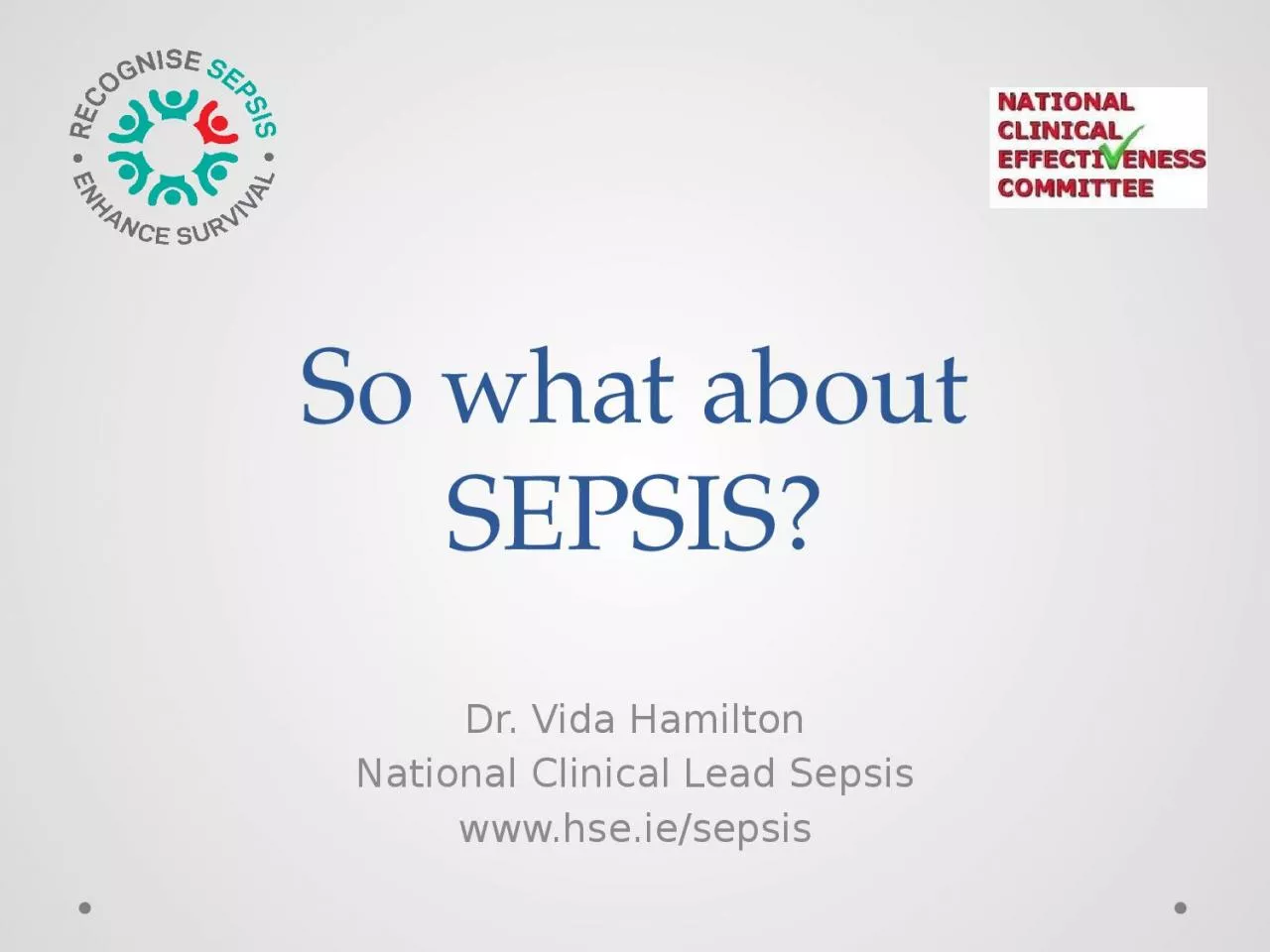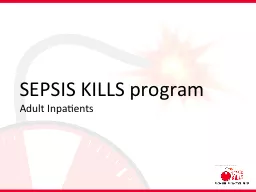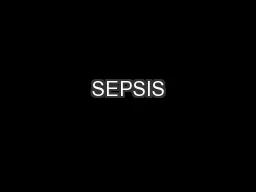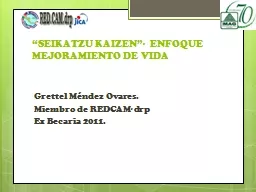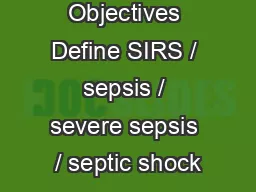PPT-So what about SEPSIS? Dr. Vida Hamilton
Author : fauna | Published Date : 2024-01-03
National Clinical Lead Sepsis wwwhseiesepsis Sepsis Final common pathway for death from infection National Awareness Survey 2016 25 Doctors amp 29 Nurses interviewed
Presentation Embed Code
Download Presentation
Download Presentation The PPT/PDF document "So what about SEPSIS? Dr. Vida Hamilton" is the property of its rightful owner. Permission is granted to download and print the materials on this website for personal, non-commercial use only, and to display it on your personal computer provided you do not modify the materials and that you retain all copyright notices contained in the materials. By downloading content from our website, you accept the terms of this agreement.
So what about SEPSIS? Dr. Vida Hamilton: Transcript
Download Rules Of Document
"So what about SEPSIS? Dr. Vida Hamilton"The content belongs to its owner. You may download and print it for personal use, without modification, and keep all copyright notices. By downloading, you agree to these terms.
Related Documents

